A Winter Walk through Fort Tryon Park
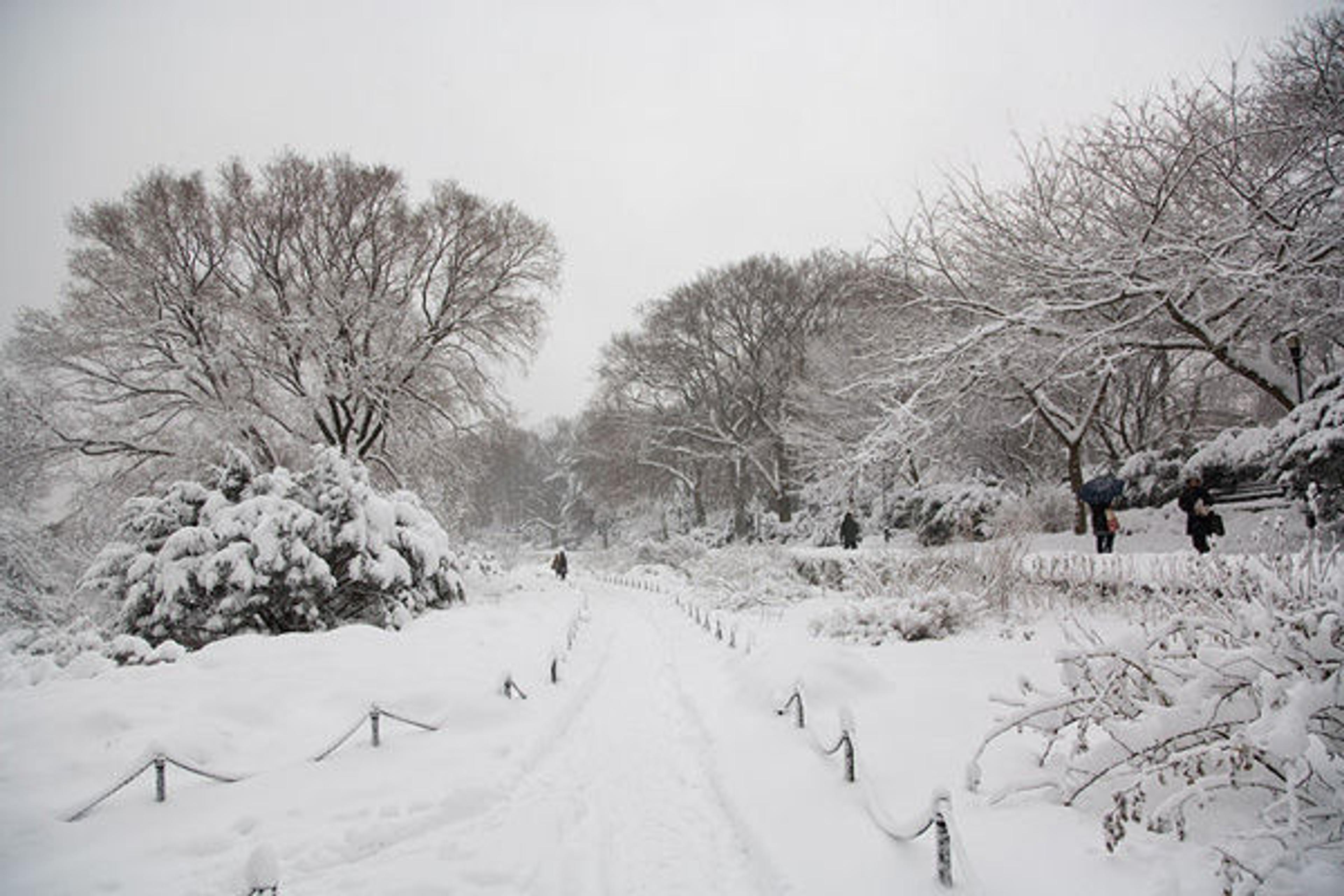
The Heather Garden's central path. Photograph courtesy of Gabe Kirchheimer
«"How do you get to The Cloisters?" For me and the two full-time gardeners charged with the care of Fort Tryon Park's sixty-seven acres of forest and two historic gardens, this is the question we are asked the most. Our answer changes from season to season: the paths don't move, but the flowers do, and we always guide visitors through the most beautiful experience the season offers.»
In that spirit, we gardeners would like to entice you to take a winter walk through Fort Tryon Park to The Cloisters museum and gardens by showing you some of the horticultural gems you'll see along the way.
The center path of the Heather Garden, pictured above, is probably the most popular route north to The Cloisters. The most prominent greenery in this winter landscape is that of the historic yews (Taxus spp.)—huge specimens dating back to Fort Tryon Park's opening in 1935.

Wiltonii juniper mingles with Kerstin heather. Photograph courtesy of the author
In winter, mature evergreens are no longer just the backdrop for flowers; they come into their own, especially after a snowfall. Along the west path of Heather Garden, Wiltonii juniper (Juniperus horizontalis "Wiltonii"), pictured above, cascades over a natural rock outcrop and mingles with an adjacent thicket of Kerstin heather (Calluna vulgaris "Kerstin").
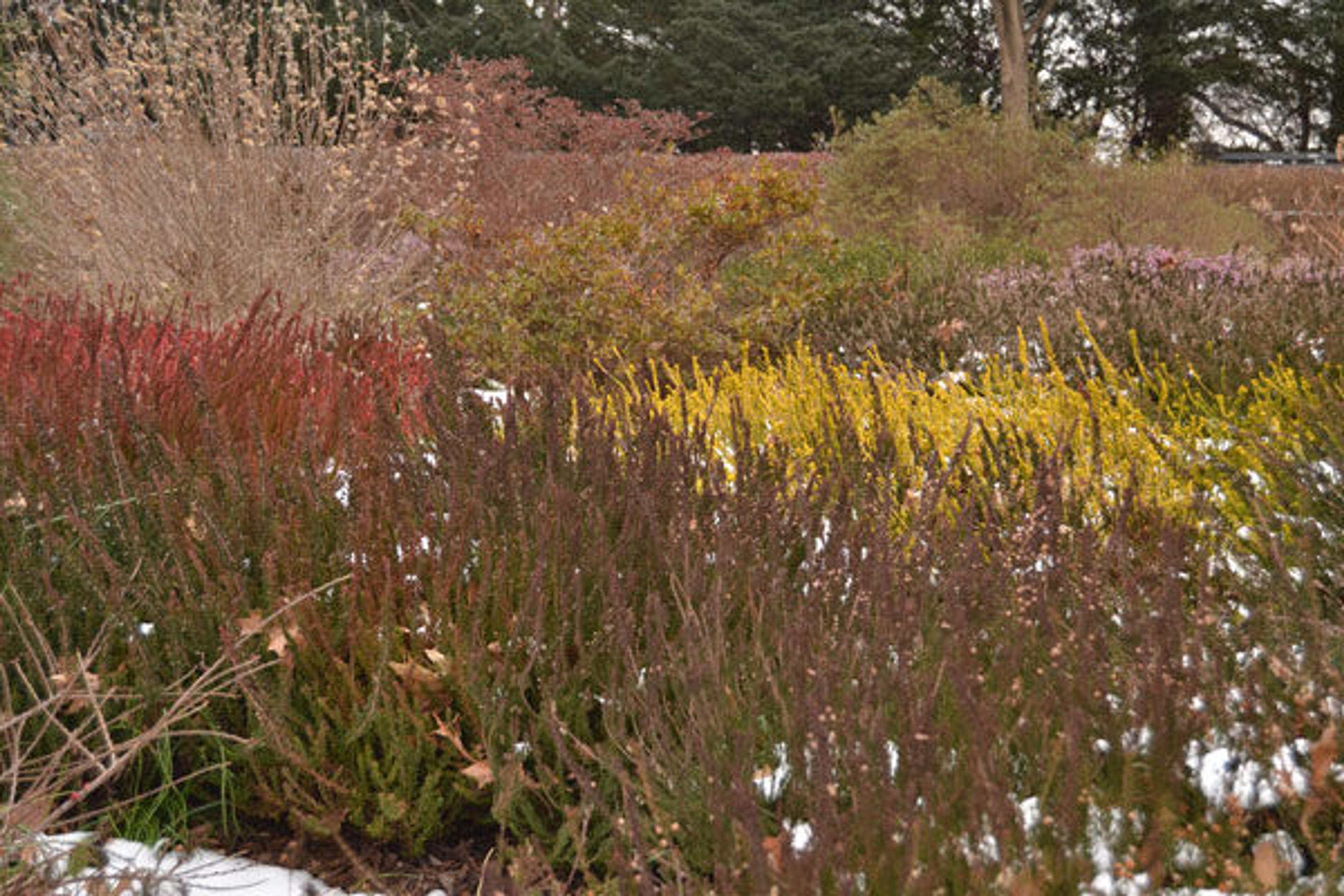
Radiant varieties of heather. Photograph courtesy of the author
Above, the crimson scale leaves of Cuprea and Firefly and the golds of Gold Haze and Beoley Gold stand out from behind Goldsworth Crimson's russets. All of these are varieties of heather (Calluna vulgaris), and are more radiant cousins of Kerstin. They are evergreen only in name—in the winter the Heather Garden is alive with all the colors of fall.
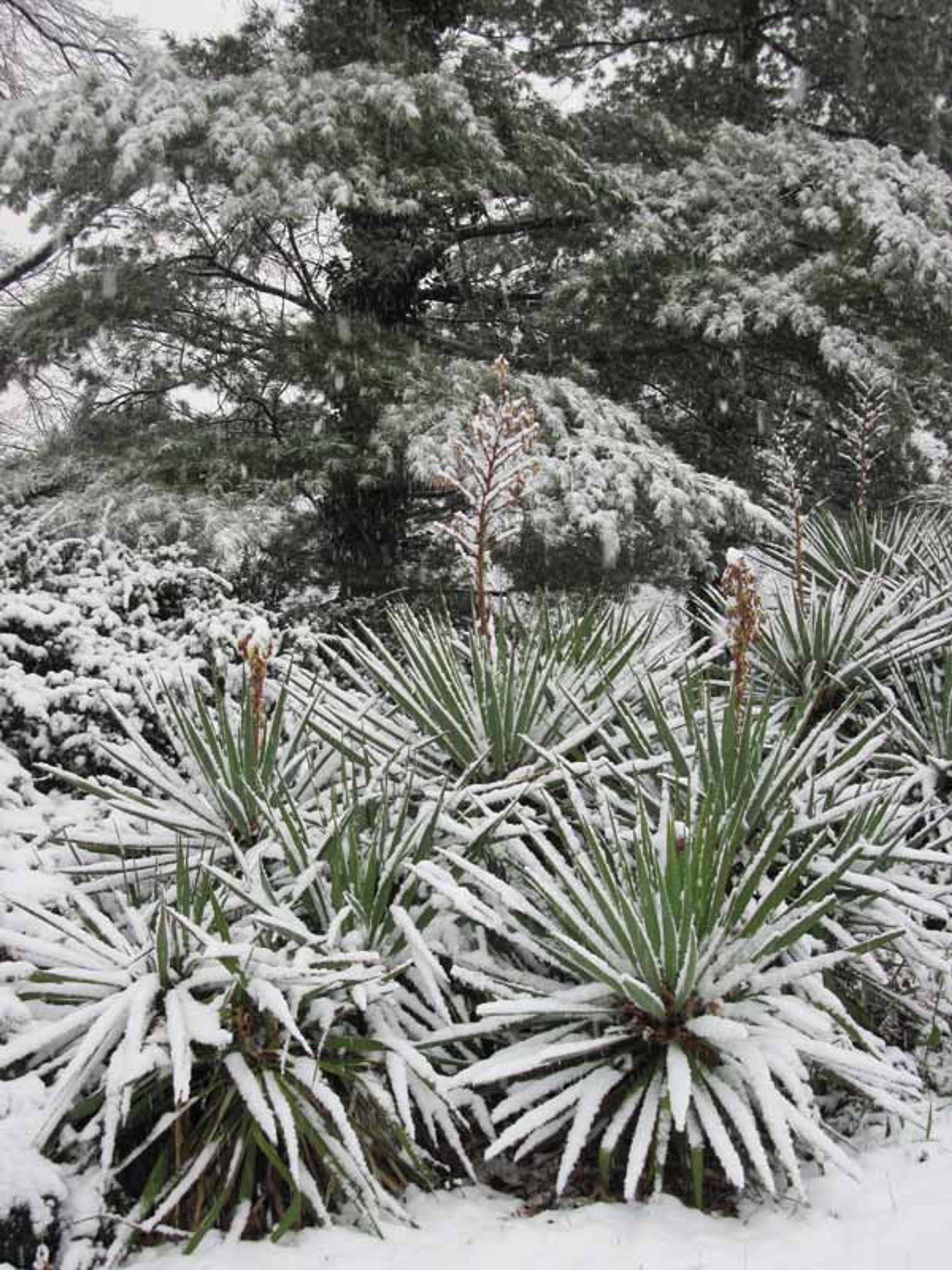
An old pine behind the sharp fans of Adam's needles. Photograph courtesy of Louise Crowley
Over on the Pine Lawn and nearby pathways, you'll find a small arboretum of conifers, including varieties of Japanese white pine (Pinus parviflora "Brevifolia"), shortleaf pine (Pinus echinata), Himalayan pine (Pinus wallichiana), and native white pines (Pinus strobus), which, like the grand specimen pictured above, are older than the park itself. The foreground's sharp fans are Adam's needles (Yucca filamentosa), great desert-like surprises that persist despite our winters and thin, dry soils.
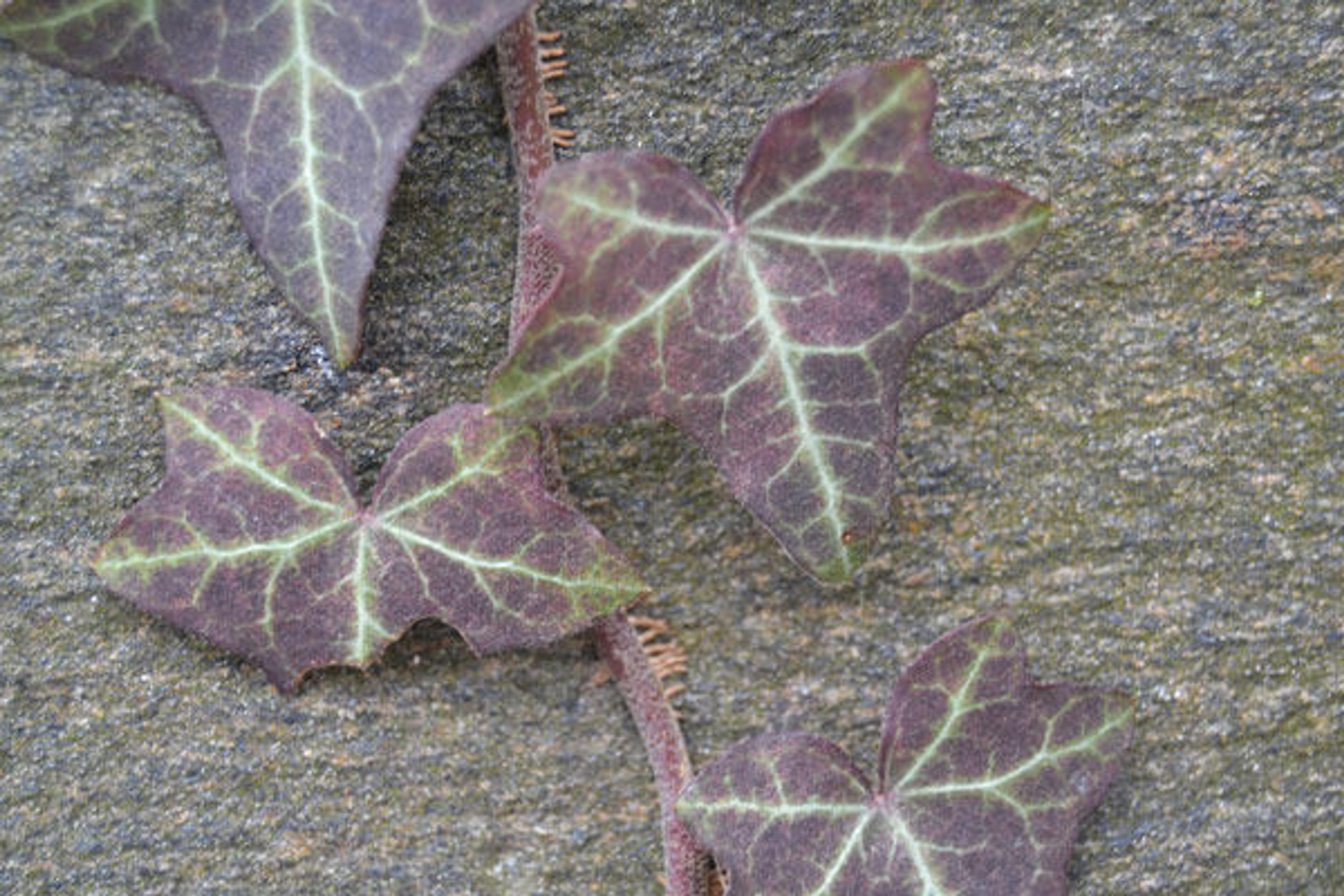
English ivy scrambling over a rock. Photograph courtesy of the author
We gardeners can't take credit for every beautiful plant in the park, however. Some of what grows here does so without our help, and is welcomed in some places and battled bitterly in others. English ivy (Hedera helix), pictured above, scrambles over many of the park's rocks and walls; in the picture you can see the rootlets that work into and grip tiny fissures. It is this ivy that is harvested and used by The Cloisters for their Christmastide displays.
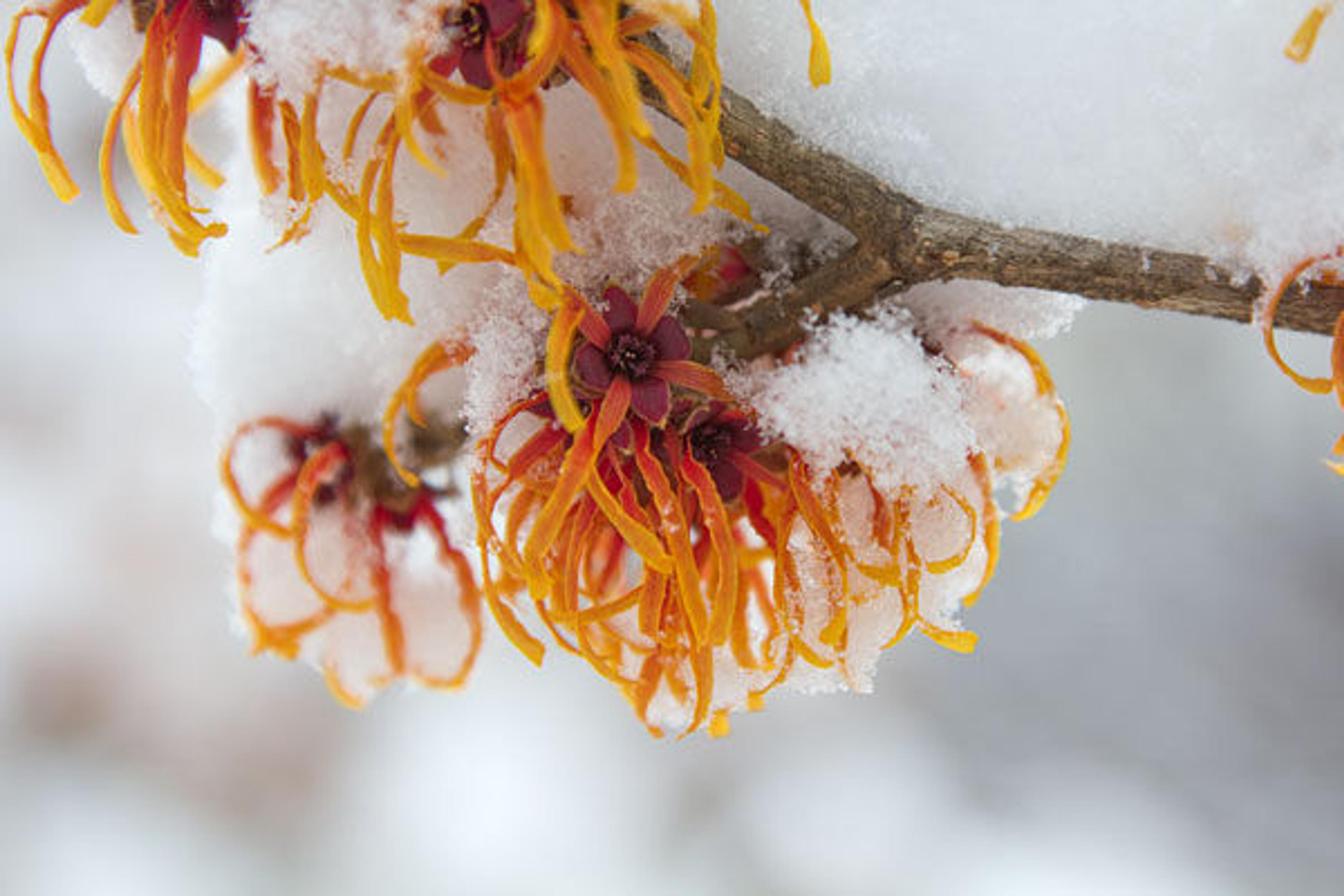
Blooming witch-hazel. Photograph courtesy of Gabe Kirchheimer
Any walk in Fort Tryon's eight miles of pathways—spread over sixty-seven acres and two hundred feet of elevation—is also about what you have to come back to see because you didn't find it the first time. For example, several winding, "secret" stone staircases network the three-acre Alpine Garden. It's a historic garden that is more vertical than horizontal, and host to such evergreen beauties as weeping English yews (Taxus baccata "Repandens"), plum yews (Cephalotaxus harringtoniana), hollies, ferns, and hellebores. The witch-hazel (Hamamelis cv.), pictured above, also resides there—seeing it in bloom takes good timing, luck, and climbing!
To learn more about the abundance of winter interest in Fort Tryon Park see Fort Tryon Park Trust's bloom lists.
Join Jonathan for a guided tour of Fort Tryon Park's Heather and Alpine Gardens on Sunday, February 1 at 1:00 p.m. at the entrance to the Heather Garden.
Jonathan Landsman
Jonathan Landsman is a landscape coordinator for the New York City Department of Parks and Recreation.